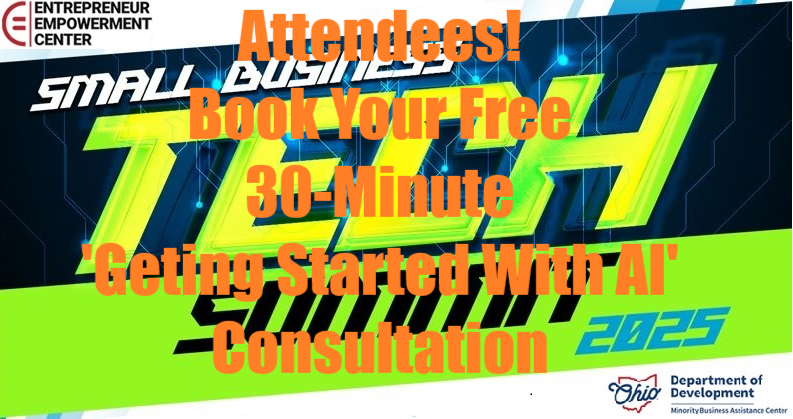AI Prompting & Context Engineering Hub
Your starting point for better prompts, smarter frameworks, and practical context design—built by Sixth City AI.
AI Prompting & Context Engineering Hub
Your starting point for better prompts, smarter frameworks, and practical context design—built by Sixth City AI.
Short version: Use the guides below to get quick wins today. When you’re ready for team training, custom prompt libraries, or prompt-tuning/context-engineering services, reach out—we’ll help you level up fast.
When you are ready, Talk to our team for Individual Instruction or to Book a training workshop for your team!
Start your prompt engineering learning journey with Sixth City AI's Prompting Framework Guides
Resource Library: Prompt Frameworks by Job Function
Each role has a concise cheat-sheet with recommended frameworks, common use cases, pitfalls to avoid, and copy-paste starter prompts. Think of these as v1 building blocks -- you can ship with them today and improve over time.
When you are ready to go the next level with Context Engineering, Prompt Tuning or Custom GPTs, give us a call!
What will you find in the library below?
Marketing
Great for: email lifecycle, SEO briefs, ad variants, landing pages, launch plans
Recommended frameworks: RISE, DEPTH, P.R.O.M.P.T., RTF, TAG, BAB, AIDA/PAS
Sales
Great for: pipeline forecasting, discovery notes → summaries, objection handling, outreach personalization
Recommended frameworks: DEPTH, ERA, CARE, RTF, TAG
Human Resources (HR)
Great for: job descriptions, structured interviews, onboarding flows, policy summaries, training outlines
Recommended frameworks: RISE, CARE, P.R.O.M.P.T., COAST
General Management
Great for: OKR planning, meeting packs, risk logs, project briefs, decision memos
Recommended frameworks: RISE, COAST, ERA, RACE
CEO / Executive
Great for: strategy narratives, board updates, investor memos, change communications
Recommended frameworks: ERA, RISE, P.R.O.M.P.T., ROSES
Start-up Owner / Founder
Great for: product roadmaps, fundraising artifacts, customer discovery synthesis, launch checklists
Recommended frameworks: APE, RISE, DEPTH, TAG
CFO / Finance
Great for: budget drafts, variance commentary, KPI roll-ups, policy refreshes, scenario planning
Recommended frameworks: P.R.O.M.P.T., ERA, DEPTH, RACE
Want these tailored to your stack and vocabulary? Ask us to create a house-style prompt library with examples from your real data.
| Thumbnail | Title | Tags | Description |
|---|---|---|---|
| Prompt Framework - CEO - Sixth City AI.pdf | Prompt Engineering CEO | CEOs balance long‑term strategy with day‑to‑day leadership. This guide pairs typical executive tasks with appropriate prompting frameworks, explains why they work, notes common pitfalls and provides sample prompts. | |
| Prompt Framework - CFO - Sixth City AI.pdf | Prompt Engineering CFO | CFOs are responsible for planning, directing and safeguarding a company’s financial health. The table below links common finance tasks with effective prompting frameworks, explains the rationale, warns of pitfalls and offers example prompts. | |
| Prompt Framework - HR - Sixth City AI.pdf | Prompt Engineering HR | HR professionals juggle recruiting, onboarding, employee relations, compliance and workforce planning. This cheat‑sheet maps each common task to the most effective prompting frameworks, explains why they fit, flags pitfalls and gives you a ready‑made prompt. | |
| Prompt Framework - Manager - Sixth City AI.pdf | Prompt Engineering Managers | For general managers and operations leaders, the following table matches everyday management tasks to the optimal prompting frameworks. Each entry explains why the framework fits, highlights common pitfalls and provides a sample prompt to kick things off. | |
| Prompt Framework - Marketing - Sixth City AI.pdf | Prompt Engineering Marketing | This cheat‑sheet provides quick guidance for marketing professionals. Each row lists a common use case, the best‑fit frameworks to tackle it, why they work, typical failure modes, and a starter prompt. | |
| Prompt Framework - Sales - Sixth City AI.pdf | Prompt Engineering Sales | A cheat‑sheet for sales leaders, managers and reps. Each row lists a common sales task, the most suitable frameworks, reasons for selection, pitfalls to avoid, and a ready‑made prompt to get you started. | |
| Prompt Framework - Start-up Owner - Sixth City AI.pdf | Prompt Engineering Start-Ups Founders | Founders wear many hats – from product visionary and marketer to fundraiser and team builder. This cheat‑sheet pairs common start‑up tasks with effective prompting frameworks, explains why they fit, notes pitfalls and offers starter prompts. |
Generative AI Prompting and Context FAQs
It’s the way you talk to an AI so it knows who to be, what to do, and how to deliver the result. A strong prompt doesn’t just ask a question—it sets a role (“act as a payroll analyst”), adds the right background (“we serve mid-market HR teams”), and spells out the deliverable (“give me a table with issues, fixes, and owners”). Do that well and the model stops guessing and starts performing.
Clarity in, quality out. When you’re specific about the task, audience, constraints, and format, the model has far less room to wander. That means fewer “made-up” facts, tighter writing, and outputs that match your goals. You’ll also get more consistent results across teammates because everyone’s asking in the same structured way.
Frameworks are templates for your prompts. They split a request into parts—like role, task, steps, and success criteria—so you’re not reinventing the wheel each time. They make prompts reusable, easier to review, and simple to scale across a team. Think of them as standard operating procedures for talking to AI.
Prompt engineering is the wording. Context engineering is the whole environment around it. That includes past messages worth remembering, who the user is, brand voice, data sources the AI can pull from, guardrails, and the expected format. Prompts tell the model what to do; context makes sure it understands the why, for whom, and under what rules.
Models are flexible by design. Without context, that flexibility turns into unpredictability. Context engineering stabilizes things: you define roles, include only relevant history, connect to trusted knowledge, and set boundaries on tone and claims. The result is steadier outputs that reflect your real-world rules.
-
Set a role and goal up front.
-
Give only the context the task needs—no more, no less.
-
Show the desired format (sections, bullets, or tables).
-
Add a couple of good examples when style matters.
-
Name success metrics or constraints (word counts, deadlines, KPIs).
-
Iterate—ask for a revision instead of settling for the first draft.
-
Keep prompts focused; long, repeated instructions can dull results.
They help by tightening the brief. When you anchor a prompt to a role, provide relevant facts, specify what’s off-limits, and ask for a particular format, you leave less room for filler or fantasy. You can also ask the model to cite its inputs or to flag anything it’s unsure about—tiny tweaks that raise the bar on accuracy.
Five essentials cover most needs:
-
Role/Persona (who the model is).
-
Context/Inputs (what it should consider).
-
Task/Steps (what to do, in what order).
-
Output/Format (how to present the result).
-
Success/Bounds (metrics, limits, tone, banned topics).
It uses the right signals in the right doses. A little profile info, relevant history, and your house style can tailor the answer without drowning the model in noise. Couple that with guardrails—like “no medical claims” or a banned-phrases list—and you get responses that feel made-for-you and still stay on-brand and compliant.
As soon as AI touches work that repeats, scales, or impacts customers. If multiple people will ask the model for similar outputs—or if the stakes include brand, compliance, or decisions—frameworks and context move you from “clever experiments” to dependable operations. You’ll save time, reduce rework, and build a knowledge base of prompts that compound in value. Connect with us at Sixth City AI to get started!

